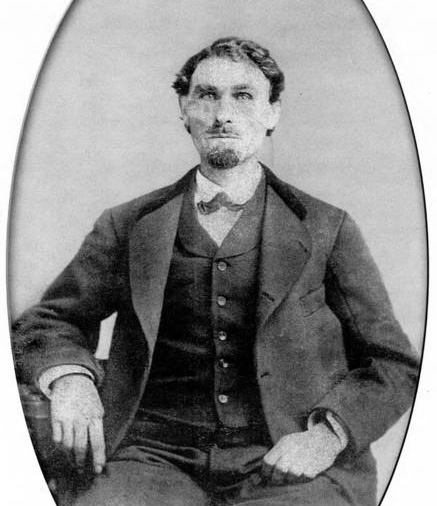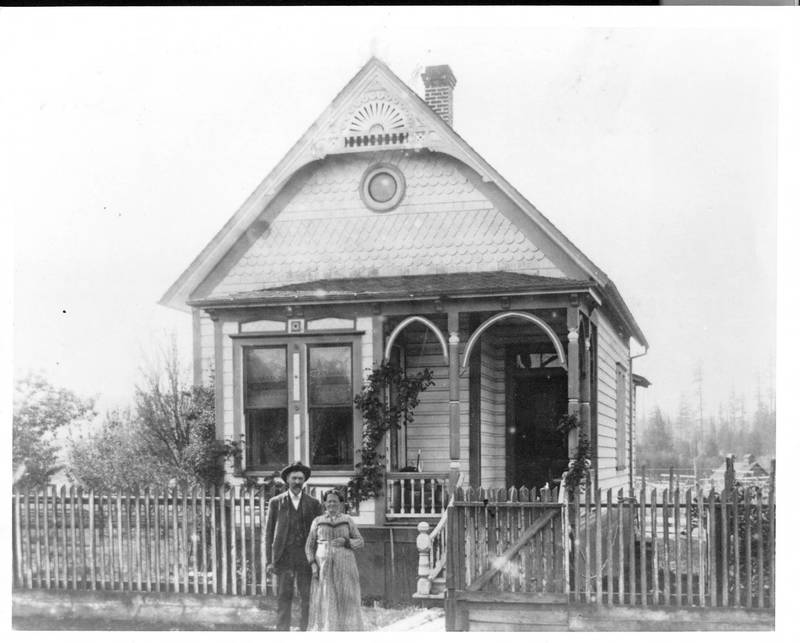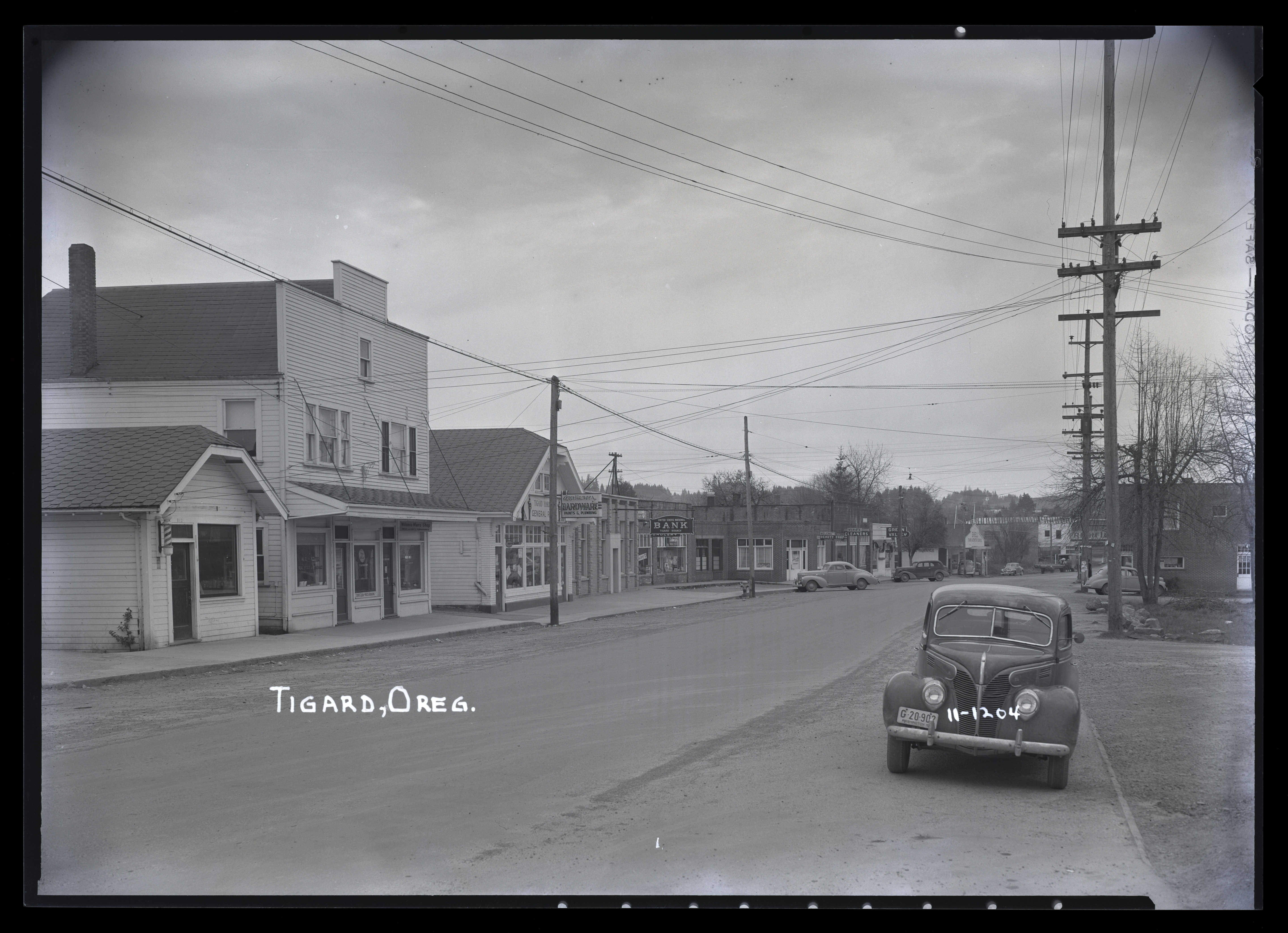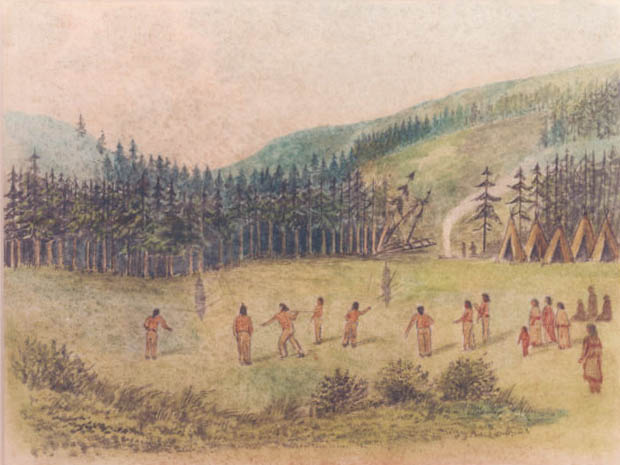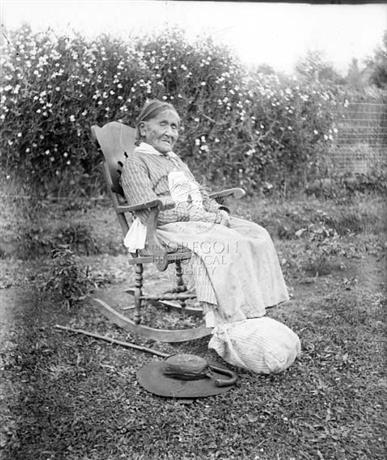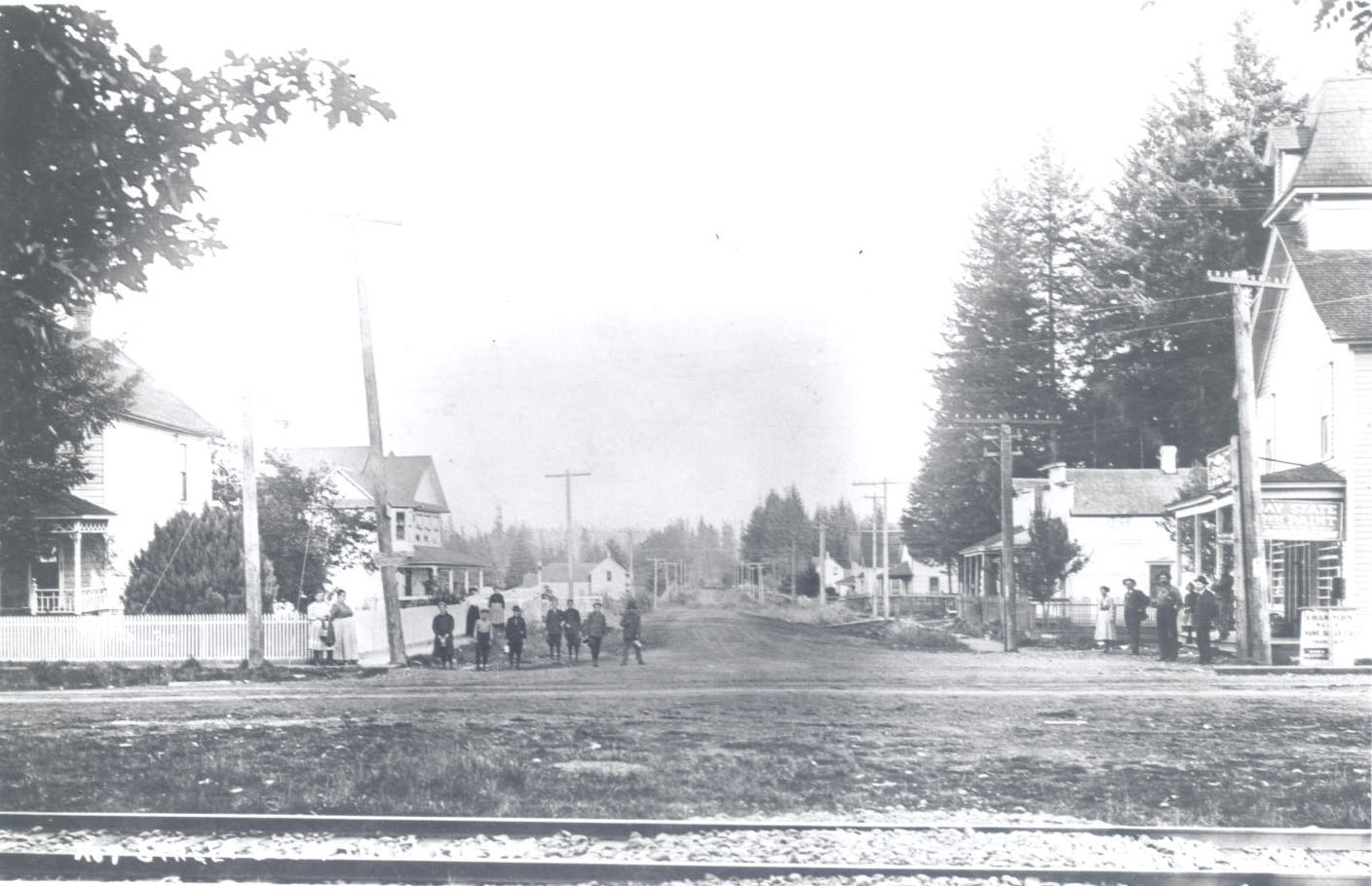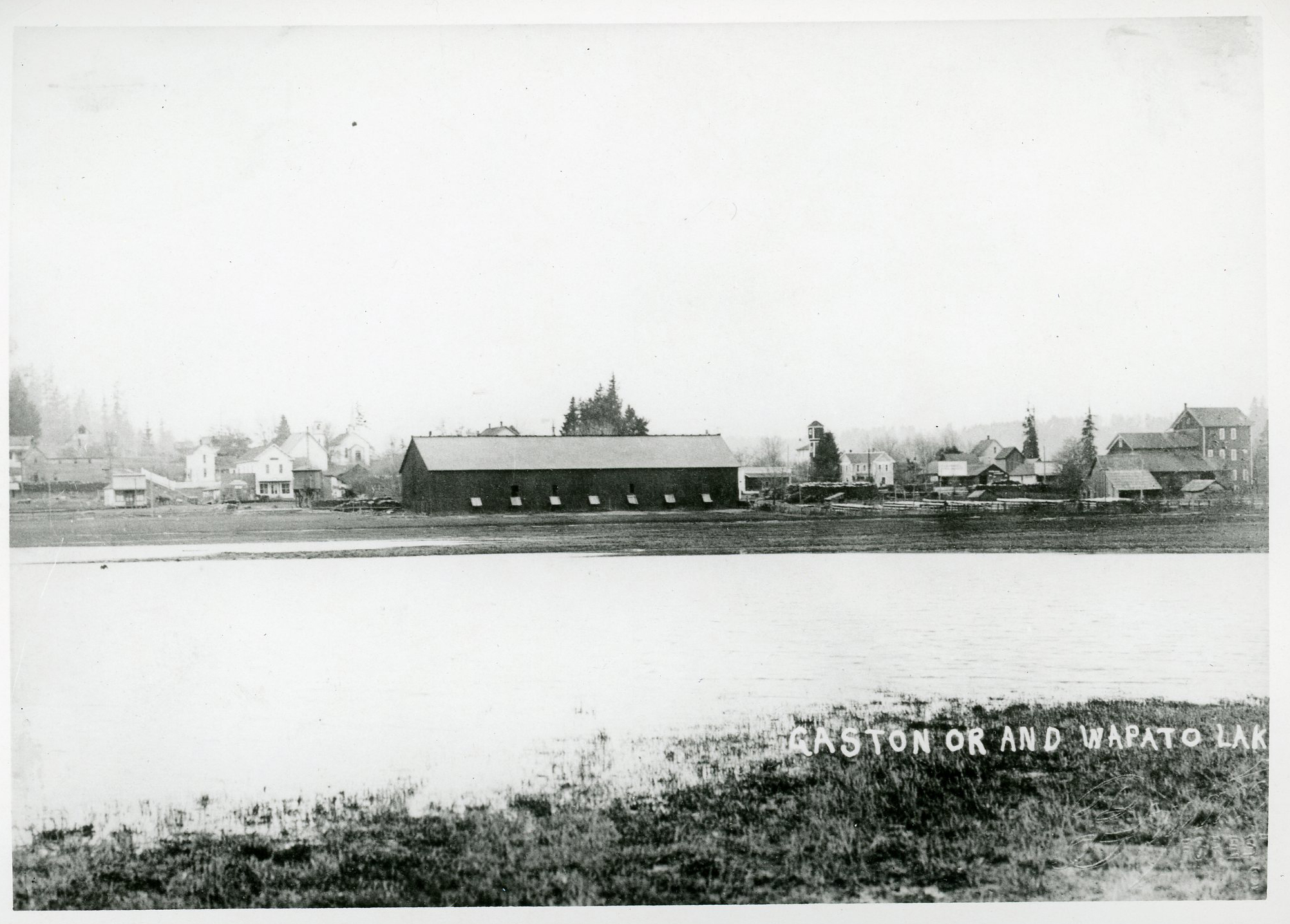In 1852, Wilson McClendon Tigard (née Tygart) settled in what became the City of Tigard to farm. He helped build the area's first school and the house that is now the John Tigard House Museum. As a community leader, he lobbied for farmers' rights and economic interests and established the first Tigard Grange by donating the land for its original building site. He is considered the founder of the town that bears his name.
Tigard was born near Fort Smith, Arkansas, on September 7, 1826, to Hugh W. and Frances Keziah Tygart. In 1850, Wilson married Mary Ann “Polly” Yoes, the daughter of William Conrad Yoes and Kissiah Bloyed. The couple lived in West Fork, Arkansas, where Tygart was a farmer. When the White River near their small farm overflowed its banks and ruined the spring crops in 1852, the couple headed west with their son John, Wilson’s mother, his brother, and his two sisters and their families. The group arrived at The Dalles in October, traveled down the Columbia River on a flatboat, and made their way to Milwaukie, where Tygart found work driving a logging team. After he was injured on the job, he relocated his family to farmland in the Tualatin Valley, south of Portland.
With the loan of two Spanish cows from local farmer George Richardson, Tygart settled his family for the winter and improved a small cabin on a 320-acre Donation Land claim he purchased from a Mr. Mathews. Richardson persuaded Tygart to stay in the community and establish a local school in a log cabin near the site of present-day Charles F. Tigard Elementary School. By 1855, the community where the family lived was being called Butte, and when the territorial election precinct was divided in 1876, the area was named East Butte.
By 1853, Tygart was signing his name as Wilson M. Tigard. On June 29, 1857, he wrote his family: “Oregon is unsurpassed by any country; the climate is good—mild and temperate—the land is good; the timber good; the water is good and I believe it is as healthy as any part of the globe. Its agricultural and commercial interests can scarcely be surpassed; its mineral resources are unequalled by perhaps any country save Calafornia [sic].” He described how delegates were elected to frame the new state constitution and discussed the agitation over the issue of slavery. The Tigards supported the territory entering the Union as a free state and rejoiced when Oregon became a state in 1859. They eventually had ten children.
The Tigards raised potatoes and other vegetables on their farm, along with grains, berries, fruit trees, flowers, livestock, and eventually hops. The farm prospered, and the family interacted with local Atfalati Kalapuya who lived in a nearby village, Chachimahiyuk, on the Tualatin River. A number of Indigenous villages were on Lake Wapato, and the Tigards learned from their Native neighbors the value of burning farmland in the fall to nourish the soil. The family used ferries to cross the Tualatin River and improved plank roads to transport farm produce to Portland markets.
Tigard became a leader in the community, and he donated an acre of land on Taylor’s Ferry Road (now Highway 99W) to build the first meeting hall for the Butte Grange, number 148, organized on April 22, 1874. The original building was replaced in 1926, and the name was changed to the Tigard Grange in 1946.
In 1880, Wilson’s oldest son, John, married Emma Ornduff. As a wedding gift, Wilson built what is today the John Tigard House on a portion of his original Donation Land claim. John balanced work as a farmer with operating a coach route to Portland.
Two years later, Wilson Tigard was in an accident and died on August 13, 1882, as a result of his injuries. Polly Tigard and the couple’s son, Charles Fremont Tigard, established the Tigardville Store on their property, naming the enterprise to honor Wilson Tigard. Charles ran the store and installed a post office there in 1886, changing the community’s name from East Butte to Tigardville. The city's name was changed to Tigard when the Oregon Electric Railroad came through, built in 1908 and opening service January 1, 1909.
-
![]()
Wilson M. Tigard.
Courtesy Washington County Heritage, Tigard Public Library -
![]()
John and his second wife, Sophia Tigard, in front of what is now the John Tigard House Museum.
Courtesy Washington County Heritage, Tigard Public Library, Tigard Historical Association -
![]()
Tigard street scene, c.1940s.
Courtesy Oregon Hist. Soc. Research Library, Gilliam Portrait Studio and Camera Shop negatives
Related Entries
-
![Indian Use of Fire in Early Oregon]()
Indian Use of Fire in Early Oregon
Anthropogenic (human-caused) fire was a major component of the Native s…
-
![Kalapuyan peoples]()
Kalapuyan peoples
The name Kalapuya (kǎlə poo´ yu), also appearing in the modern geograph…
-
![Tigard]()
Tigard
Tigard (pronounced TY-gerd) is located in Washington County’s Tualatin …
-
![Tualatin, City of]()
Tualatin, City of
The City of Tualatin is twelve miles south of Portland, on the southeas…
-
![Tualatin peoples]()
Tualatin peoples
Tualatin (properly pronounced 'twälə.tun in English) was the name of a …
Map This on the Oregon History WayFinder
The Oregon History Wayfinder is an interactive map that identifies significant places, people, and events in Oregon history.
Further Reading
Archives of the Tigard Historical Association and the John Tigard House Museum, Oregon.
Payne, Mary. Tigardville Tigard: A History of Tigard, second edition. Lake Oswego, Ore.: Lake Grove Printing Company, 1982.
Peterson, Barbara Bennett. Images of America: Tigard, Charleston, SC: Arcadia Publishing, 2013.
Sharpe, Laverne B. Tigard Area Historical and Preservation Association with David Bisset, Griggs, Lee and Ruff Architectural, John W. Tigard House, Washington County, Oregon nomination document, 1979, National Park Service, National Register of Historic Places, Washington, D.C.
"Mr. and Mrs. Wilson Tigard, Pioneers of Tualatin Valley. after Whom town is Named." Tigard Sentinel, The Inter-Community Paper, August 1, 1924.
Tigard, Wilson M. "Two Letters from a Pioneer from Arkansas," [1852]. Edited by Dorsey Jones. Oregon Historical Quarterly 45:3 (September 1944): 228-37.

